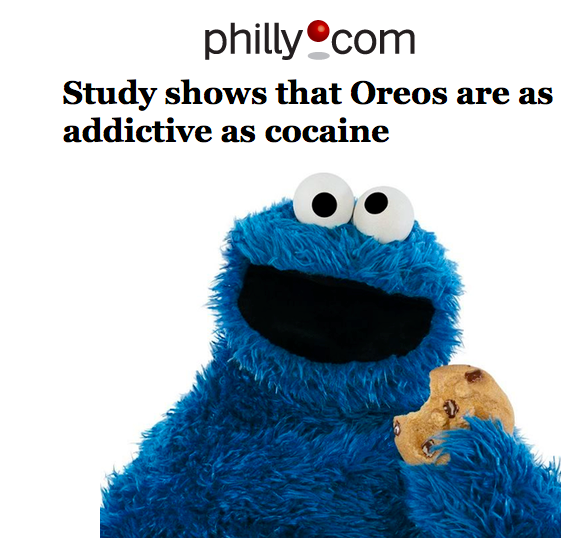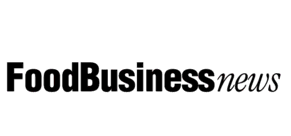public relations
Are Oreos Addictive as Cocaine?
by Joshua Schneck

 | October 16, 2013
| October 16, 2013
Are oreos addictive as cocaine?
Yes, according to headlines from scores of news sources, including NBC, CBS, Time and The Wall Street Journal. No, if you read the otherwise decent reporting and learn that the study was on laboratory rats. The website at Connecticut College has it right in the headline, which clearly states the study was in rats.
Thanks again to Gary Schwitzer at HealthNewsReview.org for shedding light on the media practice of misleading headlines regarding scientific research. As a Minneapolis PR firm specializing in healthcare PR and food & beverage PR, we understand the need to tread carefully when promoting scientific research for our clients.
Even good reporters may have nothing to do with the headline written for their story, and the resulting issues can be thorny.
Could this have been avoided? Maybe not, as the addictive qualities of Oreos is a credible concept to anyone who has eaten them – they’ve got 34 million Likes on Facebook. And, the desire of headline writers to attract readers.
Good communications with the media always help, but for something like this it’s good to think through how the media will handle a story and plan accordingly.
As for me, I like Oreos but still miss Hydrox.
New restrictions for energy drink marketing?
by Joshua Schneck

 | September 26, 2013
| September 26, 2013
Four U.S. Senators are calling for new restrictions for energy drink marketing, calling on 17 beverage manufacturures to avoid marketing their energy drinks to youngsters, according to an article by Keith Nunes in Food Business News. The letter states in part:
“Across the board, makers of energy drinks say they do not market their products to children,” Mr. Durbin said. “But we know that energy drinks are promoted through social media, and that samples are often distributed at places where teens hang out — like sports events, concerts, local parks, and S.A.T. prep courses. The truth is that contrary to industry claims, energy drink companies are using highly effective tools to reach young people and it is working. It’s time for these companies to heed the advice of public health experts across the country and stop telling children and adolescents to ‘pound down’ their products.”
Voluntary Adoption of American Beverage Association Requested
The Senators urged the drink manufacturers to adopt the American Beverage Association’s Guidance for the Responsible Labeling and Marketing of Energy Drinks and take other actions designed to curtail the marketing of energy drinks to young people. At a July, 2013 Senate hearing, three manufacturers, including Red Bull and Monster, agreed to adopt the Guidance.
Maureen Beach, director of communications for the American Beverage Association, responded to the Senators letter: “Our members are responsible companies that care about their consumers, especially children and young adults, as demonstrated through existing policies and programs. While A.B.A. did not receive the letter, we’re always willing to work with elected officials on behalf of our industry to clear up any confusion regarding our products and their safety.”
As a Minneapolis healthcare PR firm that is also a Minneapolis food & beverage PR firm, we firmly believe in responsible marketing to young people. At the same time, we also believe there are limits to what laws and regulations can accomplish in promoting healthy eating and drinking habits. Common sense starts at home.
Private label and digital marketing
by Joshua Schneck

 | September 25, 2013
| September 25, 2013
Private label and digital marketing: can they co-exist? The answer is an emphatic yes, as private label and store brands join the fight for the mind and preferences of the Millenniums – AKA “generation Y.” This generation, born from the early 1980s to the early 2000s, looks to the web and mobile for information and cues about what products to buy.
Facebook, Twitter, Blogs
That means Facebook, Twitter, blogs, and consumer review sites. It also means websites and mobile apps geared toward building relationships with private label customers, the same way retail brands are doing. As a Minneapolis food & beverage PR firm and marketing agency, we offer an integrated marketing package of advertising, PR, social media, SEO and content marketing to our food & beverage clients.
Supermarket News profiled ten examples of creative marketing to advance their marketing directly to consumers. My favorite: using Twitter promotions to build awareness and reward engaged customers.
Another great article appeared recently in Private Label Store Brands, covering Jim Wisner’s presentation at the 2013 Collaboration Summit. Wisner emphasized that the retail brand threat also pointed to great opportunity for private label and store brand marketers who are ready to embrace digital marketing and social media.
Private label store brands need not wait to see their share shrink as retail brands make inroads. An integrated food & beverage PR and marketing plan can build new relationships directly with customers, while communicating the natural advantages of private label.
Smaller Testicles, Good Dads, Bad Reporting
by Joshua Schneck

 | September 12, 2013
| September 12, 2013
Dads with smaller testicles are more nurturing fathers, according to a rash of news stories run by Time, NBC, USA Today and other news organizations. Trouble is, the underlying story is far more nuanced – based on a study published in The Proceedings of the National Academy of Sciences, “Testicular volume is inversely correlated with nurturing-related brain activity in human fathers.” As healthcare PR professionals, we should be concerned when healthcare reporting sensationalizes scientific findings and fail to accurately rerport on these findings.
The key word there is correlated.
As Gary Schwitzer points out in his excellent HealthNewsReview.org blog, most of the news organizations failed to accurately report on this study. Gary notes that the authors of the study, at Emory University, did not claim that they had found a causal relationship between testicle size and parenting skill. In fact, they allow that it could be the opposite: parenting activity results in changes in the male body, including testicle size.
In the Emory University blog the authors state: “We’re assuming that testes size drives how involved the fathers are,” Rilling says, “but it could also be that when men become more involved as caregivers, their testes shrink. Environmental influences can change biology. We know, for instance, that testosterone levels go down when men become involved fathers.”
To be sure, some of the stories, like the ones in NBC and USA Today, do get to the nuance, but deeper in the article after most people have read or heard a misleading headline.
Why is this important to healthcare PR people? If the media can’t get a story like this right, where the information presented is fairly straightforward, how will they get complicated stories right, such as the appropriate treatment options for patients with low risk forms of cancer?
As a Minneapolis healthcare PR firm, we’ve heard clients complain that competitors can make unsubstantiated claims about their products and not get called out in the media. Schwitzer provides a watchdog service for healthcare news stories on a limited budget. His organization, and similar efforts, deserve support. But it’s important that health PR professionals, and healthcare reporters, conduct the checks and digging needed to provide accurate information to healthcare markets and customers.
Launch New Company with B2B PR and Content Marketing
by Joshua Schneck

 | September 10, 2013
| September 10, 2013
Like many Minneapolis B2B PR firms, Snow Communications uses Google analytics, SEO strategies, and related digital marketing technologies; but we understand that content is everything. We know a good story when we see it. Maybe that comes from having been a reporter and writer for The New York Times, The Star Tribune, Radio Sweden and other news organizations. Having been an editor, I have a good idea of what editors want, and don’t want. Good B2B PR firms figure out how take a story that is not fundamentally glamorous – and often far from it, and turn it into something a publication’s subscribers want to read.
In addition, we’ve launched dozens of new companies successfully.
Content Marketing: The Gift That Kept Giving
When we launched new company Zepol, we realized right away that this was a content marketing play – even before that term was in wide use. Zepol publishes trade data – data about the movement of goods from country to country, and that data is of great interest to a lot of people at companies and other organizations.
We made successful pitches about Zepol, its rapid growth, its value to its customers and related themes. But the gift that kept giving was where we offered recognized publications the opportunity to provide Zepol trade data in their publication and on their website. This became a recurring source of promotion for Zepol long after our work with them was complete.
Please read our case study
See details in our Zepol case study.
Law Firm PR Generates New Business
by Joshua Schneck

 | September 3, 2013
| September 3, 2013
Law firm PR generates new business when PR and content marketing is used to positively change perceptions in the firm’s market. When Gray Plant Mooty, a business law firm with a 100-plus year history in the Minneapolis – St. Paul market, wanted to gain more public company business, they asked a Minneapolis PR firm that specializes in law firm PR, Snow Communications, to develop a strategy and then implement it.
Key To Campaign
Key to the campaign was understanding the market perceptions that were hindering the firm from gaining more public company business. With a better understanding of these perceptions, Snow was able to develop and implement a communications strategy that targeted some key areas of market perception for change.As an experienced law firm PR firm, Snow Communications has worked as a law firm PR firm for numerous law firms, and was well grounded in law firm PR, so it already had a methodology developed for working with law firms and creating successful law firm PR campaigns.
Central to the campaign was creating visibility for the public company issue in key media read and valued by decision makers, buyers and key influencers.
Encouraging Results
The results included improved awareness of the firm’s public company legal services offerings and additional business. As a Minneapolis PR firm with law firm experience, Snow Communications understands that supporting business development is the key to bring value to its law firm PR engagements.
For more information, see our case study, “Legal PR: Breaking Through.”
Penn State Wellness Program: Healthcare PR and Marketing Dilemma
by Joshua Schneck

 | August 29, 2013
| August 29, 2013
What can healthcare PR and marketing professionals learn from the controversy regarding Penn State’s $1,200 surcharge on employees who do not meet a new requirement of the school’s wellness program to provide certain personal information and undergo a free biometric exam?
Penn State made an official announcement of the changes in early July, after consultations with faculty and other stakeholders. The Chronicle of Higher Education reported on the story in mid- and late July, “Weigh in or Pay,” followed by NPR on August 2nd. By mid-August the story had made The Wall Street Journal.
Opponents challenged the new policy, beginning with a post by a Penn State professor on the blog maintained by the Pennsylvania division of the American Association of University Professors, followed by coverage on the faculty senate blog and a drive on petition site Change.org, where opponents of the new requirements have gathered more than 2,000 signatures to date. Analysis has occurred on independent blogs, including the Harvard Business Review blog – see “The Dangers of Wellness Programs: Don’t Be the Next Penn State.”
A few observations:
I don’t claim to be an expert on wellness plans, which are encouraged as part of the Affordable Care Act (Obamacare), but here are a few observations from a healthcare PR and marketing perspective:
1. Rewards are easier to market than penalties. If a plan reduces a member’s cost for taking a positive action, that’s likely to cause a lot less problem from a PR and marketing perspective than a penalty for not taking the same action.
2. Highlighting plan member self-interest is generally superior to highlighting the needs of the employer. It’s possible that too much of the Penn State wellness program focus was on how much money it would save Penn State. Positively engaging plan members is probably easier when the health and lifestyle benefits of an action for them are the main thing emphasized. As we’ve stated elsewhere:
3. Be prepared for controversy with vision, persistence…and evidence. Well-run wellness plans have demonstrated strong ROI, promoting healthier lifestyles and outcomes with genuine cost savings. Yet, critics of the Penn State plan, including the authors of the Harvard Business Review blog post (see above) attacked the merits and payoffs of the new requirements. Promoters of these plans must be ready to cite clear evidence that plan requirements result in better outcomes. And with social media, including petition sites, Facebook, blogs, etc., opponents have more tools at their disposal. It would be wise for plan promoters to have a comprehensive crisis management plan in place, including provisions for social media.
Legal Services: Commodity or Brand?
by Joshua Schneck

 | July 10, 2013
| July 10, 2013
Are your legal services viewed as a commodity or a brand? Law firms are struggling with price pressures from customers and prospects, yet few law firms actively and comprehensively market their services in a branded way. As an agency that works not only with law firms but also with branded companies like Hormel, General Mills and 3M, we’re used to designing marketing campaigns that build on branded products and services and make the case for the price premium customers expect to pay.
Branded product marketing communicates higher quality, greater overall satisfaction and the higher likelihood that the product will meet the customer’s specific needs. In the case of branded services, the customer service dimension, including a satisfaction guarantee, is highlighted along with the promised end result. Branded product and service marketing tout the key differentiators that make that product or service unique.
Law firms that seek to build market share and pricing power should develop a branded marketing strategy and communicate their brand promise in a consistent, comprehensive way.
– Joshua Schneck
Vine Could be a Big Deal for the Public Relations Industry
by admin | January 31, 2013
With the launch of its new service called Vine, Twitter is hoping to do for video what it has already done for text –shrink it into bite-sized bits that are quickly and easily shared.
Available as a free app for iOS devices (with other platforms coming soon), users can splice together six seconds of looping video for quick viewing. The animation can be one continuous shot, or as many quick cuts as one can fit into six seconds. Vine videos can be embedded into Twitter streams, or shared on personal websites or other social media sites like Tumblr.
It’s easy to imagine what some creative public relations managers might do with this new tool. And many proactive brands are already testing the waters. GE, Ritz Crackers, Dove and Urban Outfitters are some of the major brands to have already posted their own Vine videos. Are any of them ground-breaking achievements likely to lead to a boost in sales? Probably not, but that sort of misses the point.
A Personal Touch
Savvy brand managers learned a long time ago that social media platforms like Twitter and Facebook are more about interactive dialogue rather than one-way promotions. Social media creates opportunities for more direct interaction, and Vine videos will allow for that interaction to be more personal than ever.
These brief micro-videos can be used to provide a quick, no-budget, no-frills look past the sparkling veneer of finished ads and into the human side of a company. For example, companies might post Vine videos featuring:
- A quick product demo
- Visual menus, or daily restaurant specials
- The view from the trade show floor
- The face of a customer service rep responding to a question or complaint
- A special thank-you to certain customers, clients, or partners
- Holiday greetings
- A teaser trailer for a longer presentation on another channel, such as YouTube
Time will tell whether this new app will succeed. But it certainly creates some intriguing opportunities for marketers who are willing to give it a try.
Avoid the Branding Echo Chamber
by admin | December 17, 2012
Groupthink, as defined by Merriam-Webster, is “a pattern of thought characterized by self-deception, forced manufacture of consent, and conformity to group values and ethics.”
Such conformity to group opinion can be a real danger when company leaders, believing that they and those around them have an accurate sense of their brand’s reputation, fail to generate external feedback prior to making branding decisions. Brand evaluation and reorganization can be a very positive and healthy thing. Every business must evolve to survive. Messages need to be updated. Websites refreshed. Ads evaluated. But when tackling these challenges, it is important to remember that public perception is what really matters, and that perception can sometimes vary widely from what’s assumed by the top brass.
For example, members of your sales team might not feel comfortable speaking up about their distaste for the current logo when sitting across from the company’s top executives, who likely approved that very design.
Your company’s clients, however, will probably have no qualms about being more direct.
So, what options are available for gathering meaningful data on corporate brand? Here are a few that can be much more valuable than an internal discussion in the conference room:
- One-on-one meetings with customers
- Focus groups
- Ad Readership Studies (if appropriate)
- Online survey tools like those offered by Constant Contact or SurveyMonkey.
In other words, don’t just make sure you are asking the right questions; make sure you are you asking the right people. Internal discussions are necessary, but the most coveted opinions should be reserved for customers and potential customers.





